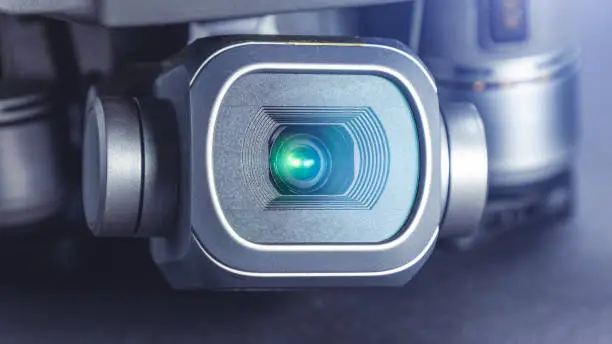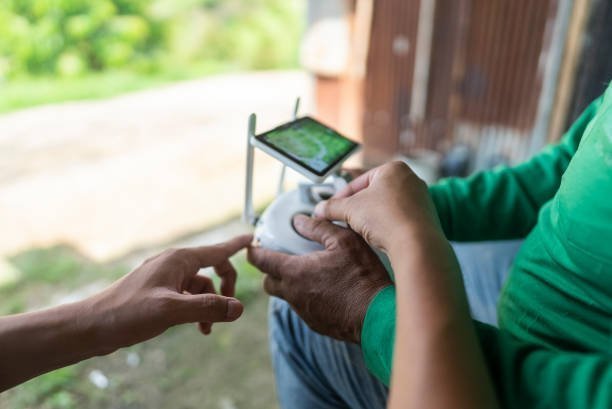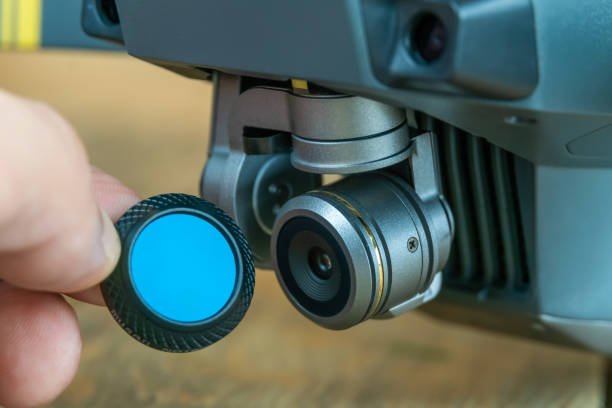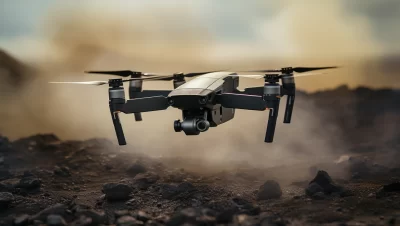Hey there! Are you curious about what drones can see through? Ever wondered if they have the superpower to peer through walls, houses, curtains, blinds, or even windows?
Well, you’re not alone! Many of us have pondered the possibilities of this incredible technology. Luckily, I’ve got some exciting insights to share with you that might just blow your mind.
Guess what? Drones possess remarkable visual capabilities that allow them to navigate through various environments, even in challenging conditions like darkness or cloudy skies.
These unmanned aerial wonders have the power to capture stunning imagery and detect objects that may not be visible to the naked eye. From spotting hidden details in the dark of night to exploring the depths of clouds, drones can reveal a whole new world of visual information.
By delving into the depths of what drones can see through, we’ll uncover their potential applications in fields such as surveillance, photography, inspection, and environmental monitoring.
Not only will you gain a better understanding of their capabilities, but you’ll also discover the ethical considerations and privacy concerns associated with drone surveillance. So get ready to have your curiosity satisfied and your knowledge expanded!
By the end of this article, you’ll be equipped with the knowledge to navigate the world of drone vision with confidence. Whether you’re a drone enthusiast, a professional in a related industry, or simply someone intrigued by the possibilities, this article will empower you to make informed decisions.
So, let’s embark on this exciting journey together and uncover the fascinating realm of what drones can truly see through!
How Do Drones See?

Imagine this: You’re flying a drone high up in the sky, capturing breathtaking aerial footage. But have you ever wondered how these incredible machines perceive the world around them? Well, let’s dive into the fascinating realm of how drones see.
Overview of Drone Camera Systems
When it comes to drone vision, the camera is the ultimate eye of the drone. These cameras are carefully designed and integrated into the drone’s system to provide a real-time visual feed. They enable us to see through the eyes of these magnificent flying robots.
But it’s not just a regular camera you would find on your smartphone. Drone camera systems are specifically tailored to meet the unique demands of aerial photography and videography.
Types of Cameras Used in Drones
Drones come equipped with a variety of camera types, each serving a specific purpose. Let’s take a closer look at some of the most common ones:
1. Visible Light Camera
Just like the camera on your phone, visible-light cameras capture images using the visible spectrum of light. They excel at capturing vibrant colors and sharp details, making them ideal for photography and videography.
2. Infrared Camera
Infrared cameras operate beyond the visible light spectrum and capture thermal radiation. They allow drones to “see” heat signatures, making them invaluable in applications such as search and rescue operations or detecting anomalies in thermal insulation.
3. Thermal Camera
Thermal cameras, a subset of infrared cameras, are specifically designed to detect and visualize heat. They create detailed thermal images, enabling drones to spot temperature variations. This capability is extremely useful in areas like infrastructure inspections, where temperature anomalies may indicate potential issues.
4. Multispectral Camera
Multispectral cameras capture imagery across different wavelengths, including visible, near-infrared, and infrared. These cameras enable drones to collect data beyond what the human eye can perceive, providing valuable insights for precision agriculture, environmental monitoring, and vegetation analysis.
Importance of Camera Resolution and Quality for Drone Vision
The resolution and quality of the camera play a vital role in drone vision. Higher-resolution cameras allow drones to capture more detailed images, facilitating better analysis and interpretation of the visual data.
A higher-quality camera ensures clarity, sharpness, and accuracy in the captured footage, enhancing the overall visual experience. It’s like having a high-definition lens to view the world from above.
Just like our eyes, drone cameras play a crucial role in our perception of the world. They enable us to explore breathtaking landscapes, conduct detailed inspections, and capture moments from unique perspectives. So, the next time you fly a drone, appreciate the incredible camera system that allows you to see the world in a whole new way.
Also Read: 7 Best Camera Drones 2024
Limitations of Drone Vision

Picture this: You’re ready to take your drone on an exciting adventure, but it’s essential to understand the limitations of drone vision. Let’s explore the factors that can impact how drones perceive the world around them and how these limitations affect their various applications.
Factors Affecting Drone Vision
When it comes to drone vision, various factors come into play. Weather conditions, lighting, distance, and obstacles can impact the clarity and effectiveness of what a drone sees.
1. Weather Conditions
Just like us, drones are affected by weather conditions. Rain, fog, or heavy cloud cover can significantly hinder their vision. Poor visibility can make it challenging for the cameras to capture clear images or detect objects accurately. It’s like trying to take a photo in a thick mist—it’s difficult to see what’s in front of you.
2. Lighting Conditions
Lighting plays a crucial role in drone vision. Low-light conditions, such as at dusk or dawn, can affect image quality and make it harder for drones to perceive details. Similarly, extremely bright sunlight can create harsh shadows or wash out certain areas of the footage.
Think of it as trying to take a photo when the lighting is too dim or too harsh—it affects what you can see and capture.
3. Distance and Altitude
As drones fly higher or farther away, their cameras face challenges. Details may become smaller, making it harder to discern specific objects or features. Imagine trying to spot a tiny ant on the ground from a hundred feet in the air—it becomes increasingly difficult the higher you go.
4. Obstacles and Obstructions
Drones encounter obstacles and obstructions in their flight paths, such as trees, buildings, or power lines. These physical barriers can block the line of sight and obstruct the camera’s view. It’s like trying to see through a wall or a thick curtain—it becomes impossible without finding a way around or over it.
Impact of Limitations on Drone Applications

The limitations of drone vision can significantly impact their applications. Whether it’s search and rescue missions, agriculture, infrastructure inspections, or wildlife monitoring, understanding these limitations is crucial for successful outcomes.
1. Search and Rescue Operations
In critical search and rescue missions, every second counts. However, poor weather conditions or limited visibility can hamper drone efforts to locate missing people or navigate treacherous terrain. It’s crucial to understand the limitations and plan accordingly to ensure the safety and effectiveness of these operations.
2. Agriculture and Crop Monitoring
Drones have become valuable tools in agriculture for monitoring crops, detecting pests or diseases, and assessing plant health. However, if the weather is unfavorable or the lighting conditions are poor, it can be challenging for drones to capture accurate and actionable data. This can impact the effectiveness of crop monitoring and management strategies.
3. Infrastructure inspections:
Drones are revolutionizing the field of infrastructure inspections, allowing for efficient and detailed assessments of bridges, buildings, and other structures.
However, limitations such as distance, obstructions, or poor lighting conditions can impede the quality and reliability of the inspections. It’s like trying to inspect a building while standing too far away or encountering obstacles in your line of sight—it becomes difficult to gather precise information.
4. Wildlife Monitoring and Conservation
Drones offer a non-invasive method for monitoring wildlife and aiding conservation efforts. Yet, challenges like adverse weather, limited visibility, or flying at higher altitudes can hinder the effectiveness of wildlife surveys or data collection.
It’s important to consider these limitations when using drones for wildlife monitoring to ensure accurate and ethical observations.
Understanding the limitations of drone vision is essential for maximizing its potential across various applications. By acknowledging these factors and planning accordingly, we can overcome challenges and leverage the incredible capabilities of drones in a responsible and effective manner.
What Can Drones See Through?

Imagine this: Your drone hovers in the air, equipped with its powerful camera, ready to capture stunning footage. But have you ever wondered what exactly drones can see through?
Let’s delve into the transparency of different materials and how it impacts the applications of these remarkable flying machines.
Transparency of Materials
Drones encounter a range of materials in their visual path. From glass and windows to plastic, water, and thin fabrics, the transparency of these materials affects what drones can effectively perceive.
1. Glass and Windows
Drones have the remarkable ability to see through glass and windows. Their cameras can capture clear images and videos, allowing for unique perspectives and views. It’s like having a window into another world, providing opportunities for aerial photography or surveillance through glass structures.
2. Plastic and Acrylic
Drones can see through certain types of plastic and acrylic materials. These transparent materials allow the camera to capture images with minimal distortion. Whether it’s filming through a plastic canopy or capturing shots through acrylic barriers, drones excel at navigating these materials to provide a clear visual feed.
3. Water and Liquids
Drones are not only aerial experts but aquatic explorers as well. They can “see” through water and other liquids using specialized cameras. This ability opens up possibilities for underwater inspections, marine research, or even capturing mesmerizing footage beneath the water’s surface. It’s like having a diving companion with an eye for detail.
4. Thin Fabrics and Netting
Drones can also perceive the world through thin fabrics and netting. Their cameras can capture images through these materials, allowing for creative and unique shots. Imagine flying your drone through a delicate canopy of fabric or capturing footage through a net—drones can navigate these obstacles to unveil captivating perspectives.
Impact of Transparency on Drone Applications
The transparency of materials holds significance in various drone applications. From surveillance and security to environmental monitoring and photography, understanding how materials affect visibility is essential for optimizing drone capabilities.
1. Surveillance and Security
Drones equipped with advanced cameras and the ability to see through various materials are valuable tools for surveillance and security. They can gather visual data beyond traditional barriers, enhancing situational awareness and aiding in monitoring sensitive areas or events.
2. Environmental Monitoring
The transparency of materials allows drones to gather valuable information for environmental monitoring purposes. They can capture images through the foliage, detect changes in water bodies, or assess the health of ecosystems. This enables efficient data collection for conservation efforts and scientific research.
3. Structural Inspections
Drones equipped with vision capabilities enable efficient and detailed structural inspections. They can see through certain materials, aiding in the assessment of bridges, roofs, or building facades. This technology allows for safer and more accurate inspections, identifying potential issues without the need for extensive physical access.
4. Photography and Cinematography
The ability of drones to see through materials like glass or fabric opens up endless possibilities for creative photography and cinematography. It allows for unique angles, perspectives, and visual storytelling. From capturing breathtaking shots through windows to weaving through fabric structures, drones empower photographers and filmmakers to push the boundaries of their craft.
Drones have the power to see through various materials, expanding their vision and applications. From glass to water to thin fabrics, these incredible machines provide us with a fresh perspective on the world around us.
By understanding their capabilities, we can explore new realms of photography, surveillance, inspection, and environmental monitoring. So, let your imagination take flight and uncover the hidden wonders that drones can see.
Ethical Considerations and Privacy Concerns

Ah, the world of drones—it’s an exciting realm filled with endless possibilities. But as we explore the skies and push the boundaries of technology, it’s important to address the ethical considerations and privacy concerns that go hand in hand with drone vision capabilities.
Let’s take a closer look at these vital aspects and how they shape the landscape of drone usage.
Potential Invasion of Privacy with Drone Vision Capabilities
With their ability to capture images and videos from above, drones raise concerns about potential invasions of privacy. It’s understandable that people may feel uneasy about the idea of a drone peering into their lives.
It’s like having an uninvited guest peek through your curtains or hover around your backyard. As drone enthusiasts, it’s crucial for us to be aware of these concerns and respect the boundaries of personal privacy.
Regulations and Legal Restrictions on Drone Usage
To mitigate privacy risks and ensure responsible drone operations, regulations, and legal restrictions have been put in place. These guidelines outline where and how drones can be flown, addressing concerns about privacy and public safety.
It’s essential for drone operators to familiarize themselves with these rules, obtain the necessary permits, and adhere to flight restrictions. By following the regulations, we can enjoy the benefits of drone technology while respecting the rights and privacy of others.
Balancing Privacy Rights with the Benefits of Drone Technology
While privacy concerns are significant, it’s essential to strike a balance between protecting privacy rights and harnessing the benefits that drone technology brings.
Drones have revolutionized industries like photography, cinematography, and inspection, offering new perspectives and opportunities. They assist in search and rescue missions, monitor environmental changes, and aid in disaster response.
By embracing responsible practices, transparency, and open dialogue, we can navigate the ethical considerations surrounding drones and ensure their positive impact.
As drone enthusiasts, it’s our responsibility to understand and address the ethical and privacy concerns associated with this technology.
By respecting privacy boundaries, adhering to regulations, and engaging in open discussions, we can foster a safe and responsible drone community.
Let’s embrace the incredible capabilities of drones while upholding the values of privacy and ethics. Together, we can unlock the full potential of this innovative technology while maintaining the trust and respect of those around us.
Future Developments and Advancements

As we delve into the fascinating world of drones and their incredible vision capabilities, it’s important to consider the future developments and advancements that lie ahead.
The field of drone vision is constantly evolving, with ongoing research and innovative technologies paving the way for exciting possibilities. Let’s explore what the future holds for drone vision and how it may shape our world.
Ongoing Research and Innovations in Drone Vision
Researchers and engineers are tirelessly working to enhance drone vision systems, pushing the boundaries of what these flying marvels can perceive.
Through advancements in image processing algorithms, sensor technologies, and machine learning, we can expect significant improvements in the clarity, accuracy, and real-time analysis of drone-captured visuals.
These developments open up new horizons for applications such as precision agriculture, autonomous navigation, and even medical imaging.
Emerging Technologies Enhancing Drone Vision Capabilities
The emergence of cutting-edge technologies is set to revolutionize drone vision capabilities, taking them to new heights. Let’s take a closer look at some of these exciting innovations and their potential impact.
1. Artificial Intelligence and Computer Vision
Artificial intelligence (AI) and computer vision are reshaping the way drones “see” the world. By leveraging deep learning algorithms and neural networks, drones can not only capture images but also interpret and understand their content.
This enables them to recognize objects, track movements, and even perform complex tasks autonomously. AI-powered drones have the potential to revolutionize industries like security, delivery services, and infrastructure inspections.
2. LiDAR and Depth-Sensing Technology
LiDAR (Light Detection and Ranging) technology, coupled with depth-sensing capabilities, offers drones a new dimension of perception.
By emitting laser pulses and measuring the time it takes for them to bounce back, drones equipped with LiDAR sensors can create detailed 3D maps of their surroundings.
This technology enhances obstacle detection, enables accurate terrain mapping, and facilitates precise measurements. It has immense potential in applications such as construction, urban planning, and disaster management.
3. Hyperspectral Imaging
Hyperspectral imaging takes drone vision to the next level by capturing information beyond the visible spectrum. By analyzing a broad range of wavelengths, hyperspectral cameras can identify the unique spectral signatures of various materials and substances.
This opens up a world of possibilities in environmental monitoring, mineral exploration, and precision agriculture. Drones equipped with hyperspectral imaging can assess crop health, detect pollution, and identify hidden objects or substances that are invisible to the naked eye.
Potential Applications and Implications of Advanced Drone Vision
With the advancements in drone vision technology, we can anticipate an array of exciting applications and implications.
From improving search and rescue missions in challenging environments to enabling autonomous inspections of critical infrastructure, the possibilities are immense.
Advanced drone vision also has the potential to revolutionize fields such as cinematography, wildlife conservation, and even healthcare.
Imagine drones equipped with advanced vision capabilities assisting in wildlife research by tracking animal movements and monitoring their habitats.
Imagine drones navigating through complex urban environments, inspecting buildings for structural integrity, and identifying potential hazards. These are just glimpses of the future made possible by advancements in drone vision.
As we look ahead, it’s crucial to recognize the ethical considerations, regulatory frameworks, and privacy concerns that accompany these advancements. Striking a balance between technological innovation and responsible use is key to unlocking the full potential of advanced drone vision and ensuring a positive impact on society.
In conclusion, the future of drone vision is filled with promise and potential. Ongoing research, coupled with emerging technologies, will continue to push the boundaries of what drones can see and comprehend.
From AI-powered systems to LiDAR and hyperspectral imaging, the capabilities of drones will expand, revolutionizing industries and improving our lives in countless ways.
As we embark on this journey, let us embrace these advancements responsibly, ensuring that the benefits of drone vision are harnessed while addressing the ethical considerations and societal implications they bring.
Final Thoughts on What Drones Can See Through

As we reach the end of our exploration into the fascinating world of drone vision, let’s take a moment to recap the main points we’ve discussed.
Throughout this article, we’ve delved into the capabilities of drones and their ability to see through various materials. From glass and windows to thin fabrics and netting, drones have the potential to peer into spaces that were once hidden from our view.
We’ve also explored the impact of transparency on drone applications such as surveillance, environmental monitoring, and structural inspections.
Understanding what drones can see through is of paramount importance across different sectors. From search and rescue operations to agriculture and infrastructure inspections, having a clear understanding of drone vision capabilities allows us to harness their potential effectively. By leveraging their ability to perceive the world around us, we can enhance safety, improve efficiency, and gain valuable insights.
As we look to the future, the possibilities for drone vision are boundless. Ongoing research, coupled with emerging technologies like artificial intelligence and LiDAR, promises even more advanced capabilities for drones.
These advancements will undoubtedly shape the way we interact with the world, revolutionizing industries and providing new avenues for exploration and innovation.
In conclusion, the world of drone vision offers us a glimpse into a future where the boundaries of perception are pushed further than ever before. It’s a world where drones become our eyes in the sky, unveiling hidden details and offering valuable insights.
As this technology continues to evolve, it’s important to strike a balance between innovation and responsibility, addressing ethical considerations and privacy concerns along the way.
With the right approach, we can unlock the immense potential of drone vision and pave the way for a safer, more efficient, and truly transformative future.
Frequently Asked Questions
Curious minds want answers! Here, we address common questions about drone vision, including walls, clouds, curtains, blinds, windows, night vision, and more. Let’s unravel the mysteries together.
Can drones see through walls?
Drones cannot see through walls. Their cameras rely on visual and sensor technologies, which are unable to penetrate solid objects. However, drones equipped with thermal cameras may detect heat signatures emitted through walls, providing a different form of perception.
Can drones see through clouds?
Drones cannot see through walls. Drones heavily rely on visual cues and require a clear line of sight to navigate and capture imagery effectively. So, when clouds roll in, it’s best to keep your drone grounded and wait for the skies to clear.
Can drones see through curtains?
In general, drones cannot see through curtains. Curtain materials, such as fabric, obstruct the line of sight of drone-mounted cameras. So, you can relax and enjoy your private moments without worrying about prying drone eyes.
Can drones see through blinds?
Just like curtains, blinds serve as a visual barrier for drones. Whether they’re vertical or horizontal, blinds made of solid materials block the view of drone cameras. So, feel free to adjust your blinds to your preferred level of privacy without concern about drone intrusion.
Can drones see through windows?
Drones equipped with standard cameras cannot see through closed windows since they function similarly to walls, blocking the view. However, if a window is open or transparent, drones can capture images and videos through it.
Can drones see inside your house?
Drones cannot see inside your house unless you have open windows or doors. Their cameras are limited by physical barriers like walls, ceilings, and closed doors. Drones operate within the bounds of the law and are not designed for invasive activities.
Can drones see in the dark?
Drones cannot see in complete darkness like creatures of the night unless they are equipped with night vision capabilities. These drones utilize infrared or thermal cameras, which can detect heat signatures and provide visibility in low-light conditions. However, their range and level of detail may vary, so it’s important to consider the specific drone’s capabilities.
Can drones see at night?
Drones can see at night with the help of infrared or thermal cameras. These specialized cameras detect heat signatures and convert them into visible images, allowing drones to navigate and capture visuals in low-light environments. So, if you’re planning a nighttime aerial photography session or need to conduct surveillance in the dark, a drone with night vision capabilities can be a valuable tool.
Remember, while drones have their technical limitations, responsible and ethical use ensures they are used for legitimate purposes and respect privacy concerns.









